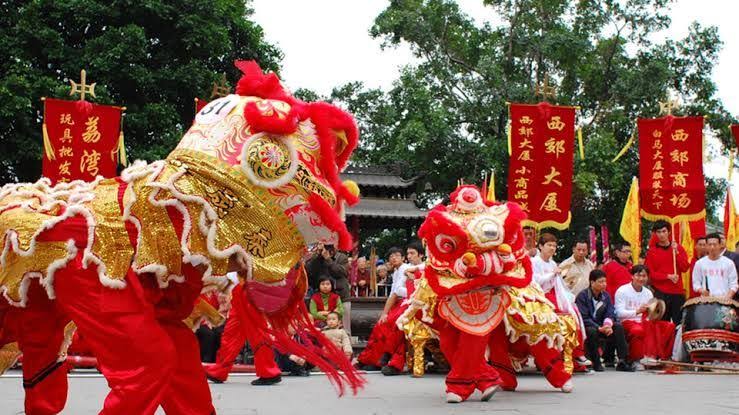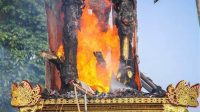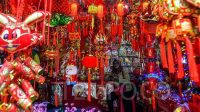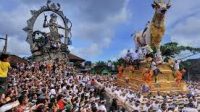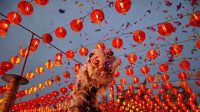KUPASONLINE.COM — Lion Dance is a traditional Chinese dance that is performed on major events such as the Spring Festival. In Indonesia, the Lion Dance is more popularly known as the Lion Dance.
While the Spring Festival is called the Lunar New Year celebration to welcome the Chinese New Year (Lunar New Year or Chinese New Year). Do you know why there is always a lion dance during Chinese New Year?
Barongsai and Chinese New Year
Reporting from China Highlights, according to traditional Chinese beliefs, the lion signifies courage, strength, wisdom and excellence.
The lion dance is performed at festivals or major events in Chinese culture to bring good luck and ward off evil spirits.
The Barongsai dance is performed to drive away ghosts and evil spirits. Because the Chinese believe in monsters, ghosts, evil spirits and giants like Nian are afraid of loud noises.
The lion dance is one of the most important traditions at Chinese New Year. To bring prosperity and good luck in the coming year. As well as a way to create a festive atmosphere and bring happiness.
A brief history of the Barongsai
In traditional Chinese culture, the lion, like the Chinese dragon, is just an animal that exists in myth. There were no actual lions in China but came via Silk Road traders.
Rulers in what is now Iran and Afghanistan, sent lions to the Emperor of China as a gift for the right to trade with Silk Road merchants.
Before the Han dynasty (202 BC-220 AD), only a few lions reached the Central Plains from the western region of ancient China (present-day Xinjiang). The lion dance originates from the Han Dynasty.
At that time, people imitated the appearance and actions of newly arrived lions in a performance, which developed into the lion dance in the Three Kingdoms Period (220-280 AD).
According to Chinese legend, one day a strange creature appeared and devoured humans and beasts. The beast’s name is Nien (Nian) which sounds like a Chinese word meaning year.
The creature was so fast and ferocious that not even a tiger could kill it. In desperation, the people turned to the lions for help. The lion rushed to find a terrible enemy and managed to wound him. But the wounded Nien managed to escape. As Nien fled, he shouted, “Watch out! I will come back and take my revenge.” A year later, Nien returned.
At that time, the lion was so busy with his new job guarding the emperor’s gates that he couldn’t help it. The villagers hurriedly took some bamboo and cloth and made a picture of a lion. Two men crawled into a lion replica, running and prancing.
Facing this incredible creature, Nien ran again. So on Chinese New Year, the Lion Dance (Barongsai) is performed to send threats to ward off evil for another year. Also read: The Color Red, Identical to the Chinese New Year Celebration The Meaning of the Lion Dance Dance The lion dance is not only seen as a show of skillful strength and art but also as a discipline of the mind and body.
Externally, the Lion Dance is a full body exercise to improve health and requires skill and dexterity. Movement in this dance is also a development of inner strength and self-discipline to accept life’s challenges with grace. The transmission of the lion dance is the transmission of traditions, bloodlines, skills and relationships.
It requires respect, loyalty and respect for sifu, group leaders, fellow students and even the lion’s head.(*)
